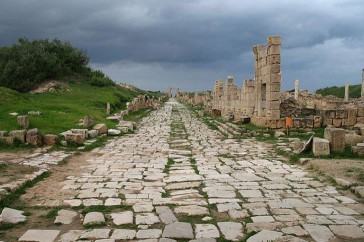It may seem that traveling only started after the invention of cars and airplanes, but this is most certainly not the case. You might be surprised to learn that travel as a form of leisure has been around since the time of the ancients. For example, Eastern Asians used to wander both for exploration and to gain new cultural experiences. The Ancient Romans were known to have traveled to vacation homes, which are no different from today’s Mediterranean villas. Even back then, people made investments toward taking time off and following the road less traveled.
Here are some examples of the different ways they were able to achieve this!
Roman Roads
Ancient Romans were among the first people to travel for their own pleasure. They also had summer villas, which was meant for various leisure activities. Of course, getting there needed some ingenuity and to serve this purpose, they created roads. While they weren’t the first to have engineered these, the way they developed these pathways was quite sophisticated and covered vast distances. Through these roads, they were able to travel safely and quickly. In fact, many of these roads are still being used today and are able to handle gas-powered vehicles.

The Middles Ages and Traveling
When we think of the Middle Ages, most people picture simpler times that had very little tools or means of travel. However, you might be surprised at how much people back then were able to journey. They didn’t do it for leisure, however. Most of the traveling that people did during the Middle Ages were pilgrimages.
This should come as no surprise considering just how central religion was when it came to people of that time period. Pilgrimages to sacred relics and sites are still being done today, as well. One of the most popular sites for pilgrimage is Santiago de Compostela, which is located northwest of Spain. To their credit, pilgrims would travel thousands of kilometres just to reach a site.
Journeying to these places is far easier today considering all the available travel options. However, back then, it was far more tasking and dangerous. The wealthy would travel through waterways or in caravans. Those in the lower classes would travel on foot and camp on the road, or find affordable accommodations for themselves.
Today, you’ll still be able to trace these old pilgrimage routes throughout Europe. If you ever find yourself in the older cities, look for scallop-shaped markers on the roads. These will lead you to various churches, which are dedicated to the saints pilgrims worshipped and were built long before there was even electricity.

17th Century Cultural Tours
Pilgrimages continued all the way to the 17th century, but there were also other developments during this period. This was when Grand cultural tours were introduced and became a trend among the young elites of Europe. Those who were able to afford this new way of traveling gained the privilege to travel to various European cities; sometimes as part of their education. This sounds better than online classes, right?
The most popular places to go at the time included Venice, London, Rome, and Paris. During these tours, visitors were able to learn more about the city’s architecture, art, and history. As tours became more structured, visitors were able to acquire the services of a tutor who was able to answer their questions and provide more information than what was readily available.
In fact, one such aristocrat who took part in this kind of tourism is Peter the Great of Russia. The young emperor was able to see most of Western Europe and also spend time in the Netherlands. Did you know that Saint Petersburg’s layout was actually inspired to a degree by Amsterdam and various other Dutch cities? It really is quite amazing how culture and inspiration can spread from one place to another simply by traveling.

The Railway System and Modern 19th Century Travel
The invention of the railway improved traveling by a great deal. Once it became established, more people were able to travel for leisure. It also became more affordable, even for people outside of the upper class. The 19th century ushered in modern tourism and opened opportunities for people to make money within the industry. Thomas Cook, for example, saw the potential and was able to putbinvestments toward the first travel agency in England. No different from how it works today, he also worked with newly developed trains and routes, as well as a network of accommodations to help put together group trips.

Travel in the 20th Century
Since then, it seems we’ve been developing at a quantum pace when it comes to travel. Transportation continues to develop and traveling is much more accessible for everyone. Back then, ships would take months to a year just to get from one place to another. These days, you just hop on a plane and within a day, be on an entirely different continent. Sure, you might need loans to finance it, but the money is well-worth the experience you’ll get.
This accessibility isn’t without its negative impact, however. There is now such a thing as over-tourism, which can severely affect a country’s local environment and people. While it is great to travel to learn and explore, it is always best to remember that we are still visitors and must show respect to every new place we find ourselves in.









